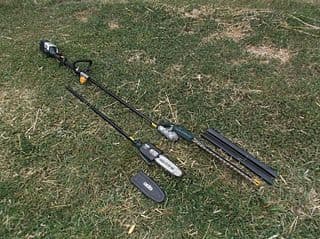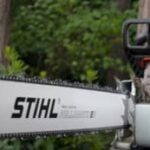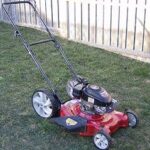As an Amazon Associate, this site earns commissions from qualifying purchases. For more information click here.
A hedge trimmer can cause serious injuries if not handled properly. Make sure you follow these safety tips and read your owner’s manual first. Although manufacturers have added various safety features to these garden tools, you can never be too careful.
Hedge trimmer blades are sharp and can lead to severe injury if not used correctly. A gas powered trimmer can cause an explosion if the fuel leaks and there is flammable material nearby.
Before you use a hedge trimmer, keep these safety tips in mind.
- Read the owner’s manual first. Follow all instructions.
- Put on a helmet, eye protection, gloves and ear protection as stated in the ANSI guidelines.
- Do not touch the blade with your bare hands, even if the engine is off. Always put the cover on.
- Never use a hedge trimmer indoors.
- Have a fire extinguisher nearby.
- Do not use a gas or electric powered hedge trimmer anywhere near flammable objects.
- Do not use an electrical hedge trimmer in wet conditions.
- You must be at least 50 feet / 15.2 meters from people and electrical lines.
Lastly, we strongly recommend buying a hedge trimmer from a reputable manufacturer. The Craftsman V20 is widely used because it is safe and provides a lot of power too.
How to Operate a Hedge Trimmer Safely
The first step is to read the manual so you know how to operate the hedge trimmer. This is not only for safety reasons but to avoid making mistakes that can damage the unit.
After putting on your safety gear, take the hedge trimmer outdoors. Make sure the blade cover is on before you take it out. Do not turn the trimmer on until you are outside so you do not accidentally inhale carbon monoxide.
If you have not done so already, clear the work area. People and animals must be at least 50 feet away. That should also be the same distance from power lines and combustible materials. While you are it, remove any rocks, debris on the hedges you will cut. This is to prevent accidents and also protect the blade from hitting a hard object.
When the area is clear, mix the gas and oil according to the instructions given in your operating manual. Wipe any spills immediately. Keep away from flames or anything flammable while mixing the fuel. When you are done mixing and there are gas and oil left over, put them in containers and store far from where you will work.
Take frequent breaks. Pay attention to what your neck, hands, wrists and feet are telling you. Do not use a hedge trimmer when you are tired or otherwise physically impaired. If you are wearing safety goggles – and you should – they should not impair your vision.
If the hedge trimmer gets jammed, turn it off right away. Do not use it again until you have determined the cause.
Stretch your arms regularly to keep circulation going. This is important especially if you are trimming a lot.
Hold the trimmer securely but not forcefully. Hold it in a natural position to avoid stressing your hands and wrists. As much as possible keep your wrists straight. It is also a good idea to always use your entire hand – not just your thumb or finger – to hold and maneuver the trimmer. If you need to make adjustments, always turn the trimmer off first. Even then you have to be careful due to the sharp blades.
Personal Protection Gear Guidelines
You must always wear protective equipment when using a hedge trimmer. Branches and other debris can fly in your direction and cause injury. To avoid these, proper protection is a must.
Eye, hand and face protection. You have two options, safety goggles or full face protection. A full face gear provides greater protection, which is ideal for heavy duty work. For light trimming, eye safety goggles may be sufficient. Always wear heavy duty gloves to protect your hands.
If you are doing overhead trimming, a full eye/face/ear protection is recommended. Hedge trimmers can get quit loud and constant exposure to it can damage your ear.
For additional protection you should wear non-slippery work boots. Shoes are acceptable as long as they are study. You may also try steel toe boots to protect your feet from heavy objects. Long pants will provide safety for your legs. Some other important reminders about clothing:
- Do not wear loose clothing
- Do not wear jewelry, ties or anything that can get entangled with the leaves or branches you are trimming
- Do not carry any small objects that could get sucked into the air filter
- Wear a dust mask if you are allergic to pollen and to protect against sawdust
Hedge Trimmer Blade Safety Guidelines
Be very careful when handling trimmer blades because they are sharp. Never touch the blade unless you are warring gloves. Even if the engine is turned off, the blade can still be dangerous so be cautious especially when sharpening or replacing it.
These blades come with a cover to protect you against cuts and injuries. You should only remove the cover when you are about to use the hedge trimmer. Put the cover back on after you are finished trimming and cleaning the blade. You should always keep the cover on when you store or carry the hedge trimmer.
Majority of hedge trimmers including the powerful BLACK+DECKER 20V MAX also have a blade stiffener. The stiffener provides additional protection but may reduce cutting sharpness. For most home related trimming, the stiffener is recommended. The blade sharpness is reduced but not enough to make the tool unusable.

Gas Hedge Trimmer Safety Tips
Never mix the fuel near another person, animal or combustible material. Keep at least 50 feet from electricity, open flames, heat, flammable liquids etc. Do not smoke while adding fuel.
If this is your first time to use a hedge trimmer, check the manual for the fuel mix ratio. Add the gas and oil exactly as directed. You should only use a container that the manufacturer approves of and make sure the cap seals tightly.
Static can build up whom you pour gas, so set the container on the ground. As you dispense the fuel, make certain the pump nozzle is always touching the container. This is necessary to prevent static electricity from accumulating and discharging.
When it comes to filling up gas hedge trimmers, always do it in an open space. Never do it indoors or in a vehicle. Be patient when mixing and storing fuel and never remove the cap while the engine is still on. Even when the engine is off, wait for it to cool off before you open the tank and add more fuel.
Never fill the fuel tank to the brim. There should be a “safe to fill” mark somewhere on the tank so stop when you reach that level.
Safety Precautions for Electric Hedge Trimmers
You should have a GFCI device for your electric trimmer, one that is UL approved and suited for outdoor use. If necessary use an extension cord, but the length should only be what you need. If the cord is too long it could hamper performance and cause overheating.
Before you start, check the connection to ensure that it is secure. As you start trimming, be mindful of the cord in case it gets entangled. If that happens, turn the hedge trimmer off and untangle the cord. You should also position the cord so that it is nowhere near the blade or area where you are trimming.
Do not user an electric hedge trimmer in the rain. Do not let the trimmer touch a wet surface. This applies not just for electric hedge trimmers but to all electric equipment. If the hedges are wet, wait for it to dry completely.
Stop using the trimmer if the cord gets frayed, it becomes too hot touch or sparks appear. If any of this happens, turn the trimmer off right away and unplug the cord. Do not use the hedge trimmer until you have found and fixed the problem.
Do not use a hedge trimmer – electric or gas – near solvents, adhesives or thinners. If there is a burning smell, turn the hedge trimmer immediately. Unplug the power and let the motor cool off before examining the device.

I love the outdoors and all the tools for maintaining gardens, yards and lawns. The only thing I am more passionate about is sharing what I know about garden and outdoor equipment.


